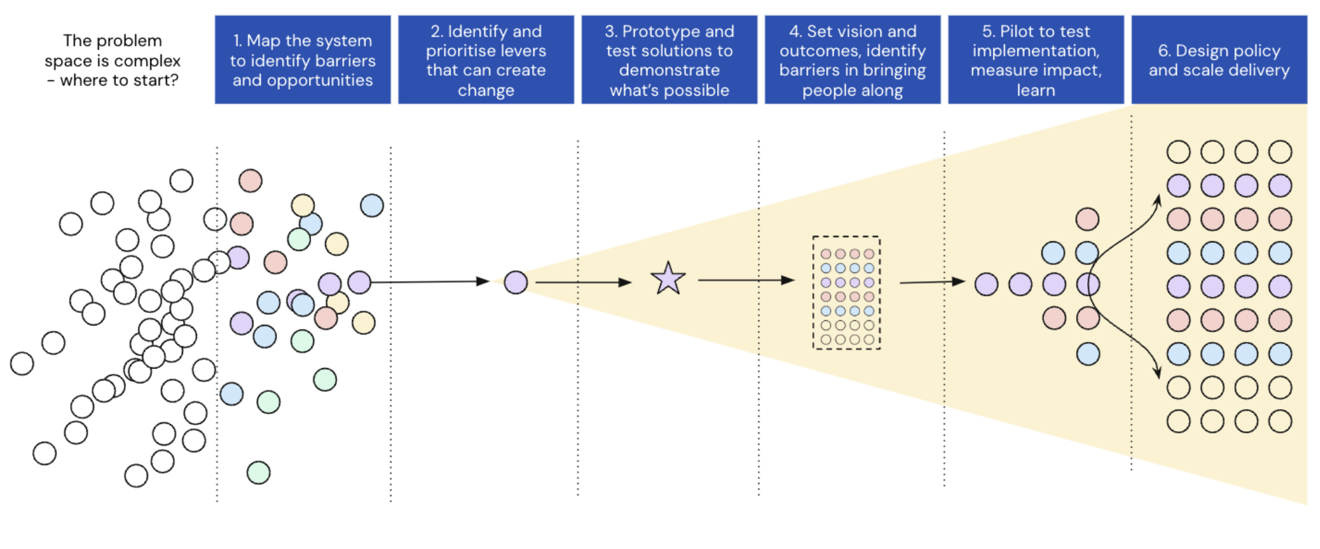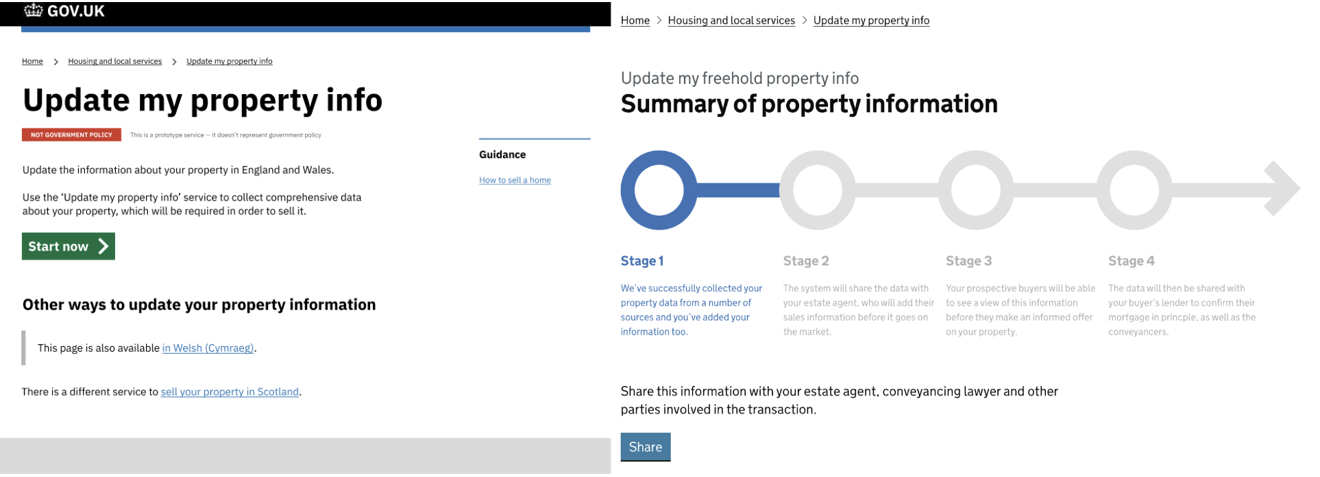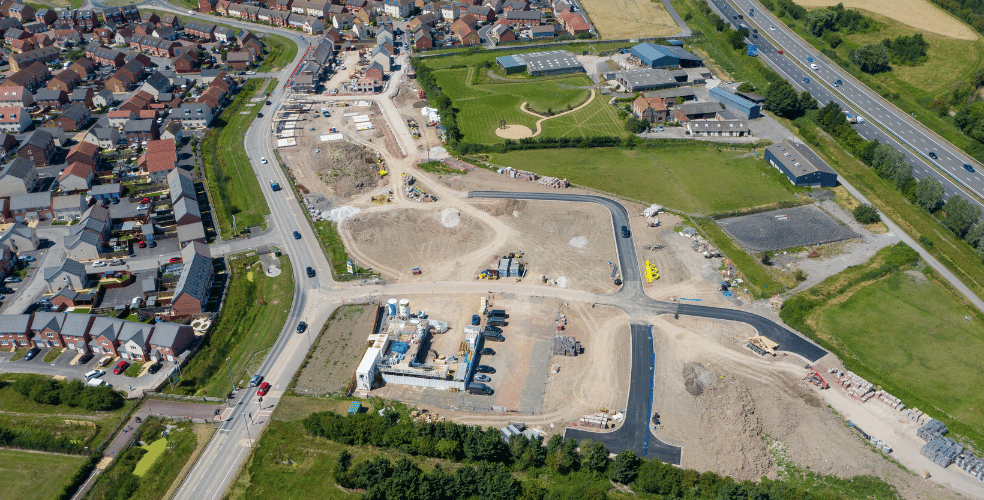Why England’s home buying needs reform
Home buying is still paper-based and stressful
Buying and selling a home is a drawn-out, confusing and often painful activity. Benenden Health research revealed that purchasing a house was the seventh most stressful life event for people in England.
This is partly because most parts of the transaction are paper-based. Forms are completed by hand, fax machines are used to send information, documents need to be printed and signed, leading to a slow, uncertain process with many delays.
The impacts on the people who buy and sell homes, and on the industry, are huge. Our research found that from the 33% of potential purchases in England and Wales that collapse, there are four million work days lost every year on those transactions and resulting in £1billion of wasted costs to estate agents and conveyancers, and £400million in costs to consumers as a result of fallthroughs.
Can we digitise property transactions? Evidence says yes
Previous discoveries conducted by the Ministry of Housing, Communities and Local Government (MHCLG), HM Land Registry and TPXimpact identified that digitalisation of data and making information available upfront can help speed up transactions and reduce fall-throughs.
Despite effort and investment from industry to digitalise, the complex and interconnected nature of the home buying and selling process has made it difficult for change to happen. This is because:
-
many different actors are involved in transactions, such as conveyancers, estate agents and surveyors, who all need to get on board with change
-
the broad range of transaction types and the potential data required, alongside different technology systems that need to be interoperable, mean change needs to be focused
-
different government bodies, agencies and arms-length bodies, all with roles to play and overlapping legal and regulatory constraints, require coordination and buy-in of diverse stakeholders
All this complexity makes it difficult to change the system because it is difficult to know where to start.
How can policy identify where to start, and show impact sooner?
Government influences the home buying and selling process, and MHCLG was keen to empower and enable industry to deliver on solutions. The department partnered with TPXimpact to identify and prioritise where government policy and intervention can be most useful to kick-start systems change and support long-term innovation.
A people-first, data-driven policy sprint
Taking a people-first approach to policy development
We worked with MHCLG to answer a specific question: What immediate policy interventions could help improve the experience of buying and selling homes, and reduce the number of fallthroughs?
Prioritising levers and testing solutions
Traditional policy-making often starts with creating a clear agenda and gathering evidence. However, the many uncertainties in this initiative meant we had to identify the biggest problem to solve, the levers that could create change, and test whether potential digital solutions might work within the existing regulatory framework. All before the government could announce its vision and introduce interventions.
To navigate such a complex problem space, we broke down our process into six steps:
-
Map the system to identify barriers and opportunities
-
Identify and prioritise levers that can create change
-
Prototype and test solutions to demonstrate what’s possible
-
Set vision and outcomes, identify barriers to bring people along
-
Design pilots to test, implement, measure, impact and learn
-
Design policy to scale delivery

An interdisciplinary approach (human-centred and data-driven)
Throughout the project, MHCLG and TPXimpact worked as a single unit, creating a multidisciplinary team and using blended methods from three different disciplines:
-
user experience design and industry engagement: To ensure we were prioritising what would bring the most value to citizens and work for industry adoption
-
data and technology analysis: To ensure we were considering the potential for data, digital technology and AI in transforming home buying and selling
-
policy design and impact evaluation: To ensure we were prioritising the most impactful actions within MHCLG’s remit
This approach was different because policy decisions are usually made taking a top-down approach, with limited direct engagement or testing with service users or technology solutions before being announced. Despite the pressures and risks of breaking with the status quo, MHCLG decided to embrace this innovative method of policy design.
Where targeted policy makes the biggest impact
To identify where the biggest impact could be made, we mapped out the key actors, problems and barriers to changing the buying and selling process. This covered a vast range of areas, including the lending, conveyancing and search processes, as well as the buyer and seller journeys.
Through mapping and engaging with stakeholders, we found that the point of making an offer for a property was where new policies and innovation could be most impactful.
The 50 data points every buyer needs upfront
We found 800 potential data points/information that could potentially be relevant to different transactions. Data research and user testing helped us identify the 50 most important data points that can reduce fall-throughs at the point of offer, if known in advance.
Prototype proves 50 data points are enough
Many in the industry were doubtful that 50 data points would be enough to achieve better outcomes for home buyers and sellers. To demonstrate the potential benefits of this approach, we created a speculative prototype where buyers through a digital platform had quick and easy access to the 50 key data points about a property. This included information such as environmental risk factors, historical disputes, or access rights, which would drastically reduce fall-throughs at the point of offer.
We tested the platform with users, and it was well received by buyers and sellers, who found it feasible to find this information, and who would be motivated to provide it upfront if it reduced the likelihood of a sale falling through.

Defining challenges that required further experimentation
The prototyping process also identified key gaps and challenges to wider scaling. We used these gaps and challenges to inform the design of pilot projects that could support property technology (proptech) companies and local authorities to work through these issues and innovate at a smaller scale. These covered:
-
how to access and quality control seller data
-
how to provide assurance on the information provided upfront
-
how to consider verification and indemnity
Getting conveyancers, estate agents and lenders on board
To ensure the proposed policies had buy-in from all stakeholders, we engaged closely with industry, including law firms, ombudsmen, estate agents and mortgage advisors. We explained to representatives about MHCLG’s future vision and roadmap for implementing new policies. We also shared the plan with consumers and asked them to share where they believed the largest barriers to scale and adoption of these new digital services would be.
Forecast results: 16 % fewer fall-throughs and £231m saved
In the 2023 Autumn Statement, the Chancellor announced that he would start putting some of the policy recommendations developed during this project into place. In the statement, he revealed that £3million of funding would be made available for a range of measures to improve the home buying and selling process.
In February 2025, leveraging our work, the Department announced it would test the design of agreed rules on property data for the sector, and work with a small number of local authorities to identify how to improve its accessibility. Following our recommendations, government will continue to enable and accelerate industry efforts to adopt data standards by taking part in collaborative processes, setting outcomes and principles.
The project found that scaling digital reforms in home buying and selling can initially reduce fall-throughs in the purchasing process by 16%, producing cost savings of around £231 million per annum.
"“The TPXimpact team enabled us to identify precisely which elements of the home buying and selling process, if reformed, could be most impactful to consumers and industry alike, and has informed our thinking on how we take this work forward now and in the future. An incredibly useful, collaborative project.”"Senior policy adviser at MHCLG

New new towns
A rare moment to reset the system, new towns can pioneer digital-first, community-powered, mission-led development.
Read more
A guide to Modern Methods of Construction
Read more
Planning reform: simplify, standardise, and engage
How we can streamline planning with clarity, consistency, and appropriate citizen input to boost development and hit housing targets.
Read moreOur latest work
Transformation is for everyone. We love sharing our thoughts, approaches, learning and research all gained from the work we do.
-

Helping Wales & West Utilities bring energy to people's homes
Read case study -

Designing smart local energy services
Read case study -

Oxford’s Zero Emission Zone
Read case study -

Designing and testing a digital site notice
Read case study
